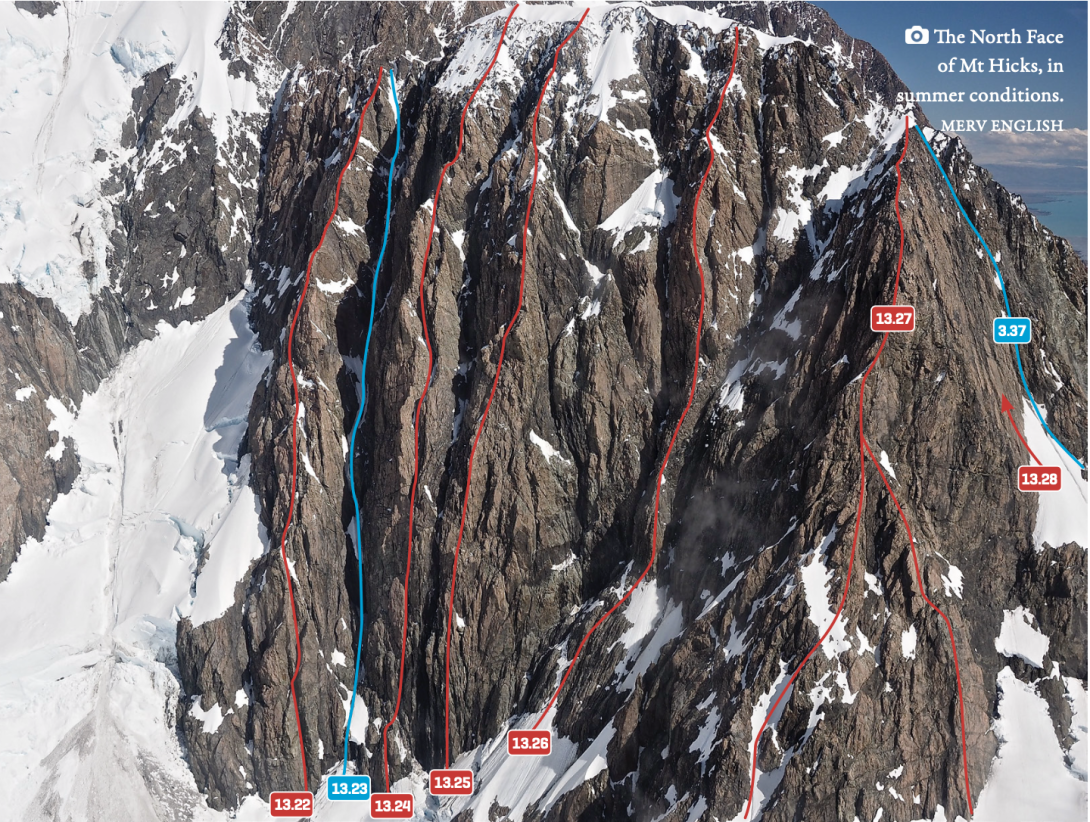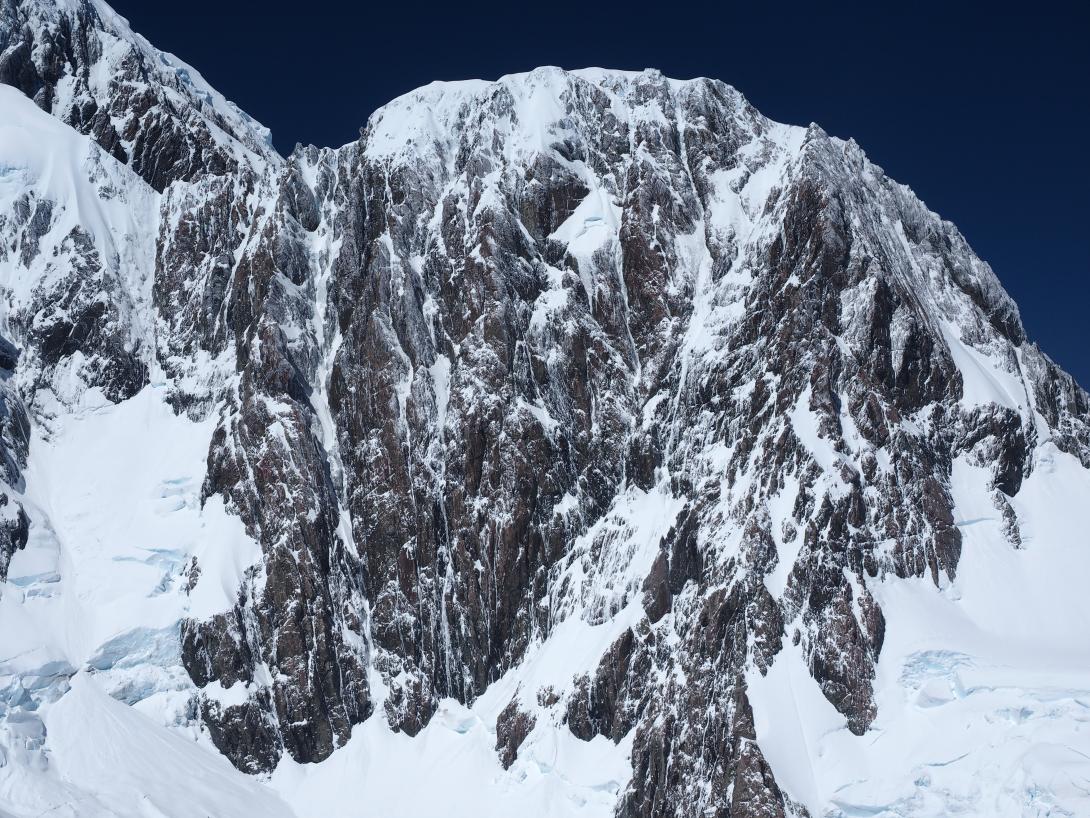The face above the La Perouse Glacier.
Usually accessed via the Harper Saddle but sometimes via Clarke Saddle from Plateau
Routes
| Reference | Title | Grade | Length | Pro | Quality | Alert | Operations |
|---|---|---|---|---|---|---|---|
| 13.22 | 13.22Left Buttress, VI,5+,15,5+ | VI,5+,15,5+ | 0m | ||||
Head up the obvious large five pitch corner on the right side of buttress, avoiding the roof by taking the right variant corner. 200m of easy climbing leads to a steep wall (crux 15) followed by easier climbing as the buttress lies back.
|
|||||||
| 13.23 | 13.23Weeping Gash, 5+,VII,6+ | 5+,VII,6+ | 0m | ||||
The gully between the Left and Central Buttresses. A startlingly steep couloir with frequent crux walls. Climbed in winter when the ice is solid. Required two bivvies. Unrepeated. |
|||||||
| 13.24 | 13.24Central Buttress, VII,5,15,6 | VII,5,15,6 | 0m | ||||
Start up a crack on a small block below the main buttress, then goes right off a ledge and into the obvious groove that takes you right up the climb. Hardest at the bottom (crux grade 15) except for a slight sting at the top. With glacial recession there may be another pitch at the bottom which is harder than 15. Good rock and classic climbing. |
|||||||
| 13.24i | 13.24iCentral Buttress variant: Monks -Sunderland, VII,6,20 | VII,6,20 | 750m | ||||
Follow an obvious system of cracks parallel to and left of the crest of the buttress until joining the original route starts to ease. Sustained climbing with two harder pitches of grade 18-20. Good rock although shattered in places. |
|||||||
| 13.24ii | 13.24iiCentral Buttress variant: McAuley -Wong, VII,6,18 | VII,6,18 | 750m | ||||
Follow the original route for 3-4 pitches, then move right just before a widening chimney with an overhanging start. Continue 15m along ledge to steep crack system (~18). The route runs along the nose of buttress parallel to and right of the original route, rejoining it after 8 pitches. |
|||||||
| 13.25 | 13.25Right Buttress, VII,6,17,6+ | VII,6,17,6+ | 750m | ||||
Start up steep dark-coloured chimneys to the right of the prominent gully keeping left of the bottom. The first six pitches are sustained (crux 17), on excellent rock. The next eight pitches are easier and on good rock. Higher still the climbing becomes more broken. |
|||||||
| 13.26 | 13.26Book of Days, VII,5,17,5+ | VII,5,17,5+ | 650m | ||||
Next rock rib right of Right Buttress. Access is via snow slopes and a gully, which ends in a cul-de-sac, beside the Right Buttress (face between these routes was climbed by Marty Beare and Lindsay Main). Climb a ramp right of corner to gain the crest of a rib. Follow crest to a striking red tower. Continue on the crest to summit. The first pitch (crux 17) is followed by sustained climbing on solid red rock, which rarely relents. Thirteen pitches. |
|||||||
| 13.27 | 13.27North Rib aka Biscuit Tin Route, VI,4,15,4- | VI,4,15,4- | 500m | ||||
|
From Access Route 13F, climb good rock on the face to the right of the rib, following the line of least resistance onto the rib itself. The rib steepens towards the top (crux 14-15). Then follow a flattening ridge for 250m to join the summit ridge at the top of the couloir on Route 3.37.
|
|||||||
| 13.28 | 13.28Red Wall, V,4+,4 | V,4+,4 | 0m | ||||
|
An eight-pitch route up red rock to the left of the couloir on Route 3.37, finishing high on the North Rib.
|
|||||||
| 13.29 | 13.29North West Ridge, V,3+ | V,3+ | 0m | ||||
|
The upper section of the North West Ridge (used on the first ascent of Hicks) fell away sometime in the late 1940s, revealing a large expanse of rotten rock that frequently rattles down a prominent corner known as ‘The Curtain’. Climbing in this area would currently be unpleasant and dangerous. For information on the Standard Route on Hicks, refer to Route 3.37.
|
|||||||

